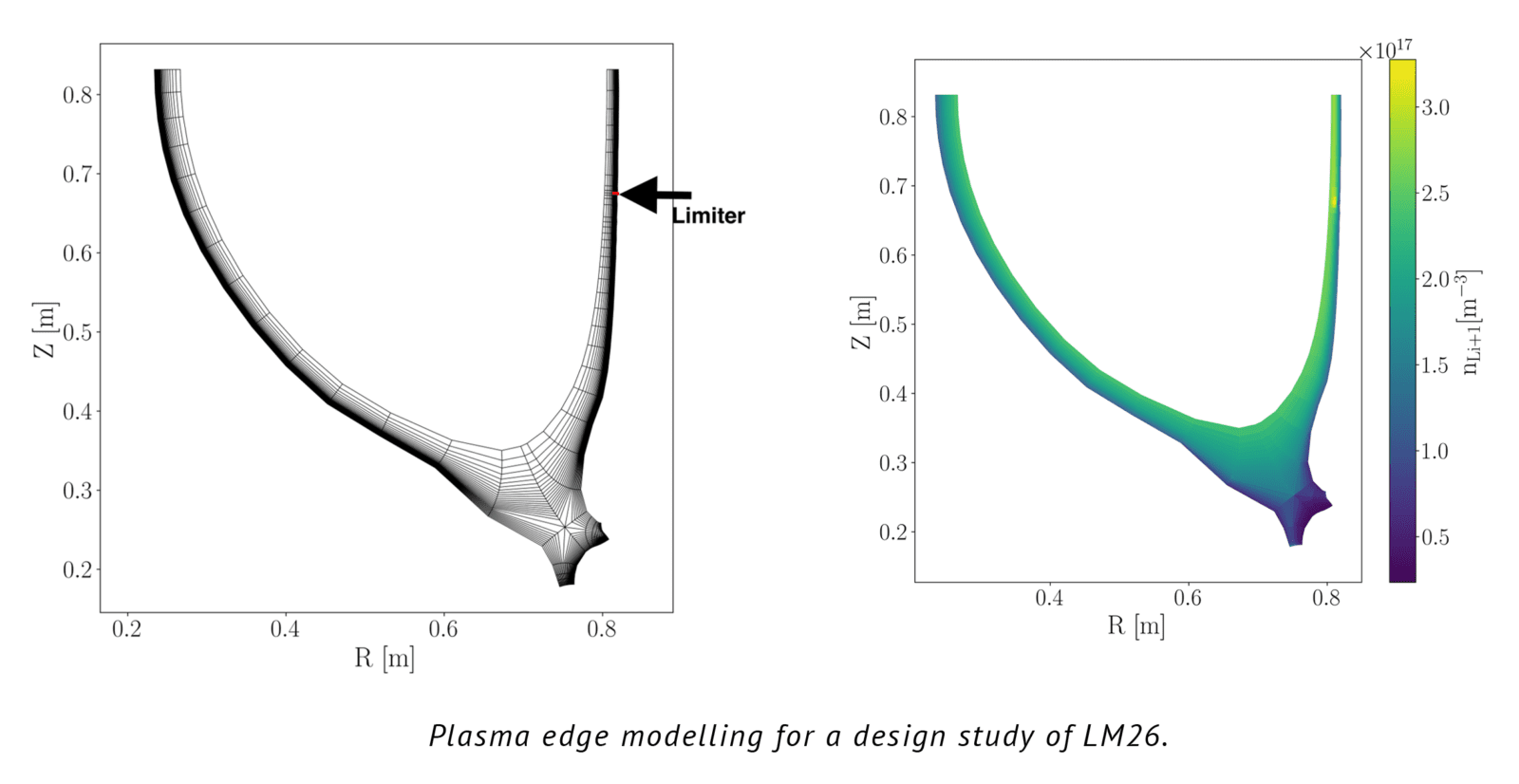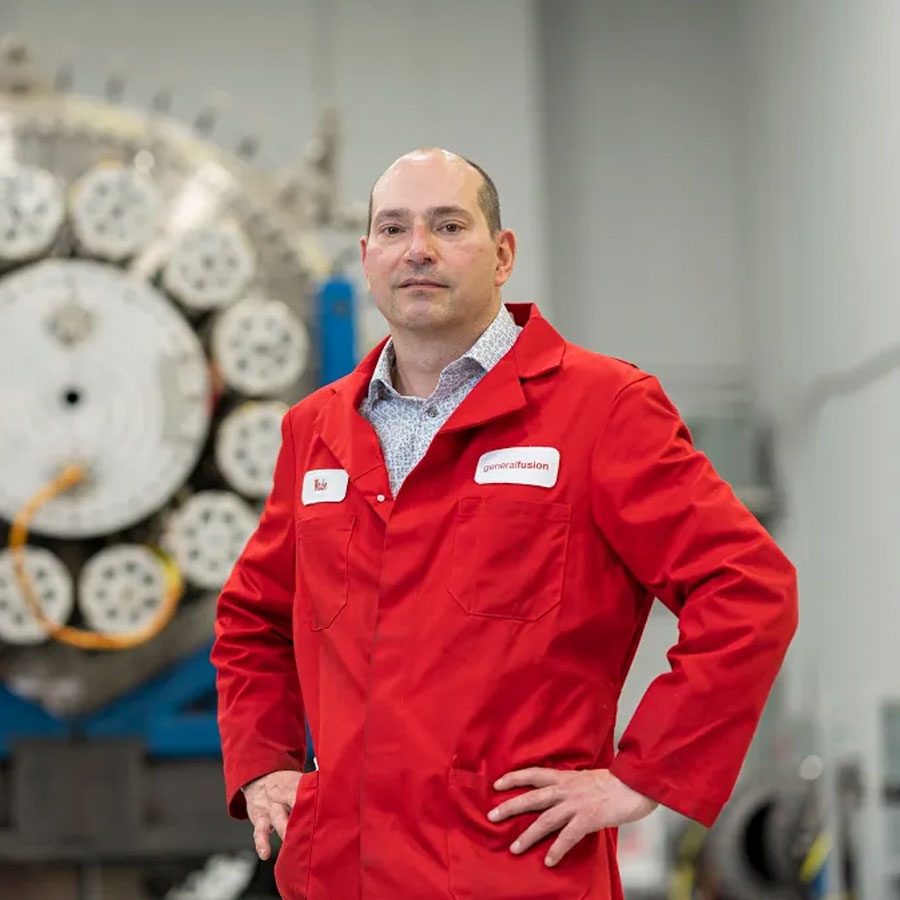Abstract
Boundary plasma and plasma-material interactions are investigated for magnetised target fusion (MTF) applications. The General Fusion magnetised target fusion technology uses coaxial helicity injection (CHI) start-up which forms a spherical tokamak in a cavity with liquid lithium walls that will subsequently be compressed to fusion conditions [1]. The Plasma Injector 3 (PI3) experiment at General Fusion is a non-compressing experiment with solid lithium walls that studies the formation and quasi-steady state operation of a CHI spherical tokamak [2]. An explorative study is carried out for wall-limited versus diverted configurations for PI3 using the fluid edge transport code UEDGE. Experimental edge temperature and density profiles from triple Langmuir probes are utilized to set up realistic plasma profiles in UEDGE. In UEDGE, we model the wall-limited plasma via a thin limiter with various insertion depths. It is found that limiter depth and location are key parameters in determining radial profiles and sputtered lithium behaviour. Furthermore, it is found that the overall sputtering of the limiter is significantly lower than the sputtering of the wall in some of the limiter configurations studied. Lithium impurity and neutral behaviour are compared between limited and diverted configurations.
A. Antony, L. Carbajal, T. D. Rognlien, M. V. Umansky, A. Froese, S. Howard, C. Ribeiro, R. Ivanov, C. Dunlea, C. P. McNally. Published in the proceedings of the 26th International Conference on Plasma Surface Interaction in Controlled Fusion Devices (PSI-26), 2024.
[1] M. Laberge, Magnetized Target Fusion with a Spherical Tokamak, Journal of Fusion Energy 38 (1) (2019) 199–203. doi:10.1007/s10894-018-0180-3.
[2] L. Carbajal, S. Jones, M. Reynolds, Z. Seifollahi Moghadam, A. Mossman, Modeling and simulation of lithium transport and radiation in diverted Pi3 plasmas, Physics of Plasmas 30 (7) (2023) 072503. arXiv:https://pubs.aip.org/aip/pop/article-pdf/doi/10.1063/5.0153107/18029932/072503 1 5.0153107.pdf, doi:10.1063/5.0153107. URL https://doi.org/10.1063/5.0153107

